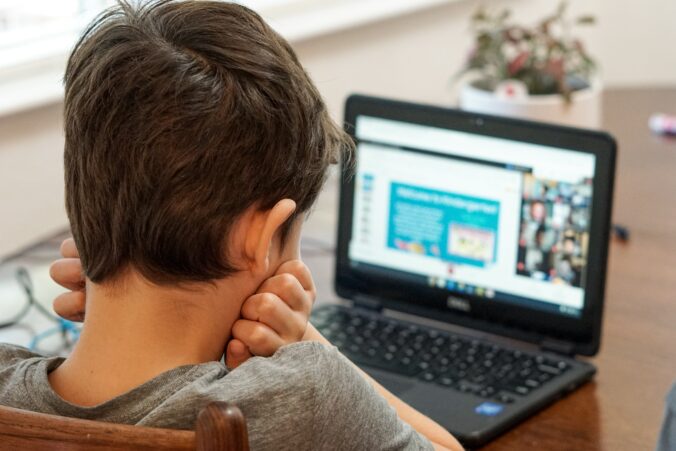In grade 8, our English teacher assigned everyone into groups to make Prezi presentations on iPads. This would fall under the Substitution step of the SAMR model. At that time, iPads weren’t the refined machines that they were today. The Prezi application on the iPad was very limited, and barebones, so it was very difficult to customize the presentation. The idea of a poster presentation was forced online, with tools that were fairly limiting (at that time), but the actual presentation (verbal narration part), was still in person. Another tool that my teachers used in high school was Kahoot, an interactive, competitive trivia game that was used for reviewing testing material where students were awarded points for the fastest and correct answer. I thought it was a fun way to break the monotonous learning style of writing/copying notes from the teacher. It is an alternative to the teacher just talking about the concepts, in the hopes that students absorb the information.
In 2019, I had the chance to try Google Earth VR in the lab in person at Uvic and it was a very interesting (nauseating too). The idea of virtual (and virtual reality) field trips has always been interesting as you can literally go anywhere in the world (Our solar system too) (that is documented by Google or independent companies) and study architectures, museum exhibits, art, sculptures, history artifacts, animals, other planets, more without investing the resources, time, and money. However, one thing you can’t really recreate (yet), is the atmosphere, weather, and interactions with people and the culture which can be equally or even more important than the locations themselves. Google Earth can be used as a presentation tool, or story telling tool which could help people practice presentation skills and creating multimedia content for their peers. Students can talk about their summer vacation, or talk about their homeland if they have immigrated. I have attached at link of my attempt at making a google earth project about some of the places I visited a few years ago.
References
Akcaoglu, M. (2016). The Substitution Augmentation Modification Redefinition (SAMR) Model: A Critical Review and Suggestions for its Use. TechTrends, 60(5), 433–441. https://doi.org/10.1007/s11528-016-0091-y
https://earth.google.com/earth/d/1to7mgTFLEmfJTSkZg_-26GD7mLO4arwP?usp=sharing

Hi Neil,
Thanks for sharing the experience. I’m able to find the Coherence and personalization principle in your post. I also had the opportunity to use both tools in my previous education, slightly more Kahoot than Prezi, partially because I thought Prezi is just a fancier and more complicated way of doing a PowerPoint. However, I do believe right now both tools can be utilized to transform learning experience, and be more than just substituting certain traditional materials. I also agree that Google Earth has the ability to overcome geographic barriers and allow more things to be seen, but it cannot replace in-person travel experience.
Cheers,
Leo